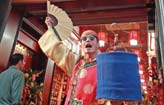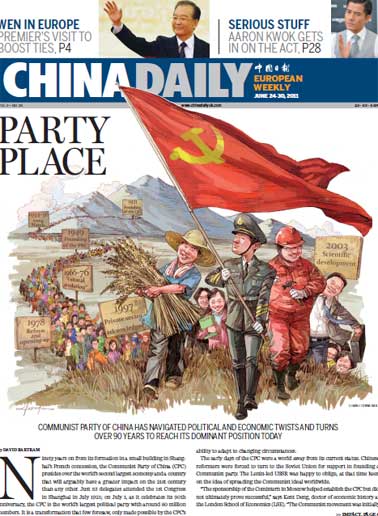Society
Traders want to offer more goods in border trade
Updated: 2011-06-30 07:48
By Wang Qian (China Daily)
YADONG, Tibet - After a half-hour drive to the Renqinggang Border Trademarket in Yadong county of the Tibet autonomous region, 29-year-old Shi Fanlu is the first trader to arrive at about 8 am on Monday.
Although most customers, especially the Indian buyers, always come in the afternoon, the girl from East China's Zhejiang province still gets up early.
"The peak season for border trade will start next month (July), so I must get ready," Shi told China Daily.
Since its reopening in 2006, Shi and her husband, Wang Jinxing, have been in the carpet business at the border trade market, where trade through Nathu La, a pass on China's border with India, is duty-free.
Indian exports are limited for now to an approved 29 commodities, mostly food products like candies and coffee, while Chinese traders are restricted to bringing in 15 types of goods, including goat and sheep skins, wool and herbs.
"The approved list was made in the 1960s, which cannot meet the increasing demand of the Chinese and Indian people near the border due to the fast economic development," Kelsang Dekyi, deputy head of Yadong county, told China Daily.
Although Shi's carpet business is included in the approved list, she still hopes the list can expand because many of her customers want to buy household appliances and daily necessities.
Li Jiying, 48, who sells china at the market, said more than 66 percent of the traders here have left since the reopening of the market because business is not easy, with too many restrictions on the goods that can be traded.
Although china is not on the list, he still has regular customers, such as Sonam Ongmu from Gangtok, Sikkim, who always appears on Monday for china in Li's shop.
Sonam likes the bowls, vases and plates with beautiful patterns and she has to carry the china she bought in the market in her large bag to avoid the border check.
Like most Chinese traders, Cham Chung, an Indian trader from Gangtok, also felt the business in the market, because the commodities restrictions, is just "okay".
The 47-year-old Indian woman has been doing business for three years in the border market.
Although the traders do not feel satisfied about their business, the yearly export and import volume is still climbing from nearly 1.5 million yuan ($232,000) in 2006 to about 20 million yuan in 2010, according to statistics from the Yadong county government.
The Renqinggang Border Trademarket opens from May to December every year, because the rest of the year experiences extreme cold weather and heavy snow, about 1 to 2 meters deep, said Kelsang Dekyi.
The market covers about 6,400 square meters with a total investment of 10 million yuan.
Xigaze prefecture in Tibet has 21 border trade markets like the Renqinggang Border Trademarket and two trading ports through roads, said Wangdu, deputy commissioner in Xigaze prefecture.
"In the coming five to 10 years, we will further improve the border trade environment to push its development," he added.
E-paper

Franchise heat
Foreign companies see huge opportunities for business
Preview of the coming issue
Stitched up for success
The king's speech
Specials

Premier Wen's European Visit
Premier Wen visits Hungary, Britain and Germany June 24-28.

My China story
Foreign readers are invited to share your China stories.

Singing up a revolution
Welshman makes a good living with songs that recall the fervor of China's New Beginning.
